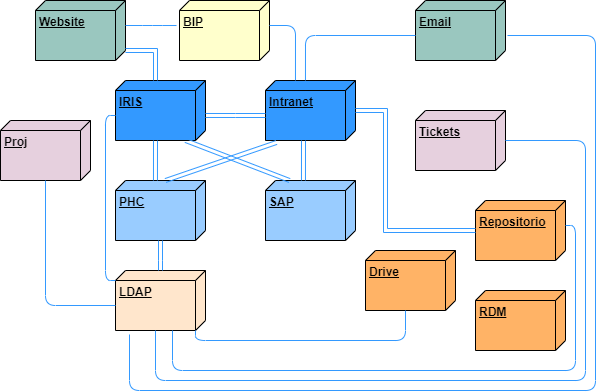In the common metaphor of an organisation as a living organism, if money is the blood that circulates and feeds the numerous organs, then information is the air that grants them life. So let us talk about information. INESC TEC’s information system, similarly to any other complex organisation today, consists of multiple components aiming to operate in an interconnected manner. The two key components are the IRIS (INESC TEC Research Information System) and the Intranet.

Concerning IRIS, we have been forming a database of projects, personal files, indicators and, generally speaking, of the records that will progressively compose our research information system. The listings used for different purposes can also be found here. This component is based on an MS SQL Server database with a Java application.
The Intranet – and after the recent reorganisation – is mainly dedicated to structuring the processes that benefit from Plone’s workflow engine, as well as the documentation associated with said processes. The Intranet monitors hiring processes and Human Resources management, vacation scheduling and the registration of project proposals, as well as travel and material requests or resources booking.
The two interconnected systems are intended for widespread use in terms of internal activity, and they both support the Website – whose main purpose is the external communication of what we are, whom we are and what we do
The BIP condenses our news, which are also presented on the Website and on the Intranet after a thorough selection.
Concerning more specialised systems, with restricted use, we have PHC for Human Resources management and SAP for financial management.
The access control has been progressively centralised in LDAP (MS Active Directory) – which is essentially served by PHC. It is used for authorising access to the various systems, and we are moving towards achieving a single authentication method, in order to obtain a more integrated user experience.
The complete texts of scientific publications, the Intranet and IRIS documentation and, in general terms, the archive of extended access documents and (possibly) the photographic archive, can be found in the Institutional Repository, built on a DSpace document management system. The data sets produced or used in our research are preserved and made accessible by registering a DOI (digital object identifier) in the RDM (Research Data Management), based on a CKAN system.
Shared work files are organised in the Drive, a Nextcloud file manager. The Email service has been operating through an Exchange server for the past two years.
It is also important to mention the Proj, a system developed to host websites for smaller projects (Plone), and the Tickets system, designed to structure and track requests addressed to a set of services (Legal Support, Human Resources, IT, Infrastructures Maintenance, Management Information Systems) that are not yet automated in the Intranet flows.
During the current year, we plan to add more features, including electronic invoicing, the dematerialisation of certain Management Control processes, the automatic generation of time cards and CRM elements.
The presentation of the infrastructure for computing, virtualisation, version control and network and security services will take place another time.
Gabriel David, Member of the Executive Board




 News, current topics, curiosities and so much more about INESC TEC and its community!
News, current topics, curiosities and so much more about INESC TEC and its community!